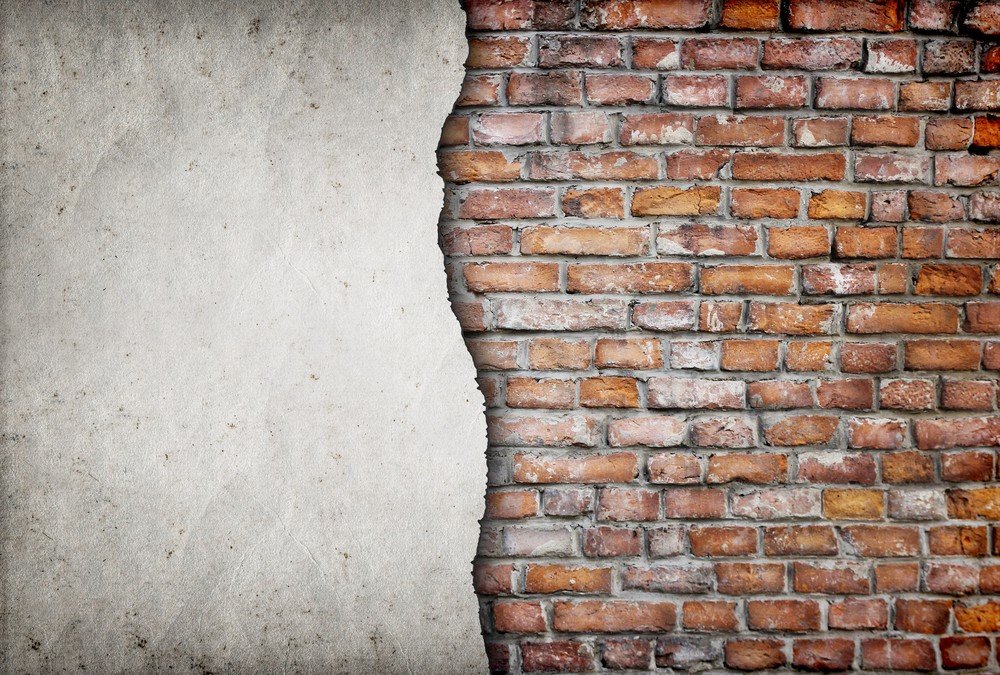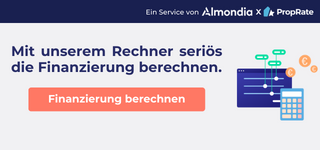How should the different levels be connected in your house? Can it be a spiral staircase? Should it be dramatically wide and stand representatively in the middle of the room, or rather restrained and space-saving along the outer wall? DIN 18065 prescribes standards for stairs: the width and height of the steps, when and whether a railing must be installed, and everything else for optimum walking comfort. In our article you can also learn how to use a staircase as a piece of furniture and the role played by light and color.
the essentials in brief
- Optimal walking comfort is determined by the human stride – this can be easily calculated using the so-called stair formula.
- Space-saving, particularly steep staircase variants, limit the comfort of climbing, but not the design.
- Contrasts can be used to stage the staircase particularly effectively.
The staircase in the house fulfills its function
The function of a staircase is both simple and supporting: it not only makes rooms on different height levels accessible, it also creates the possibility to stage the rooms on upper floors or on other height levels and to relate them to each other in a special way. Each staircase in the house is also, along with the ramp and the ladder, the element in the room that makes it possible to experience height at all. Real height, not a platform height. This makes it all the more important to consider this unique component when (re)building your home.
Good opportunities for advancement
DIN bases the height and depth of the steps on human increments. How the tolerances of this increment are utilized in the end is up to the builder. But keep in mind: If you deviate too much from the average, you automatically lose climbing comfort.
A wide step with a small slope makes the climb less comfortable, also slows it down at the same time. With its unusual gradient, the staircase draws attention to itself, a staging that must be intentional. Stairs with an unusually low riser are rather rare in private houses, because they not only take up a lot of space, but still unnecessarily slow down the ascent. What offers stage character in a theater building and is a gesture of invitation to the upper floors, proves rather impractical and actually also completely unnecessary in a residential building.

Staircase structures in the family house
What is the optimum slope?
Do you feel comfortable climbing your stairs? Is it more strenuous to climb the third floor of an old building than a new one? This is certainly also due to the floor height. This is higher on average in an old building. The other reason is the height between the steps.
The pleasant walkability of the staircase is enabled by an appropriate rise ratio, limited number of steps and by a comfortable height of the handrail. Explicit recommendations and guidelines for stairs can be found in DIN 18065. The slope is defined by the human step measurement, which results in the following formula: Twice the height of the slope (riser s) added with the depth of the tread (tread a) must contain in the result the length of the human step (61-65cm)! 2xs+a=61(-65)
Slope ratio and convenience
| Convenience | Slope (s) / tread (a) | Step size |
| Steepest necessary stairs (rather uncomfortable) | s = 20cm/ a = 23cm | 2 x 20 + 23 = 63cm |
| Normal necessary stairs (convenient) | s = 18cm/ a = 26cm | 2 x 18 + 26 = 62cm |
| Normal necessary stairs (very comfortable) | s = 19cm/ a = 27cm | 2 x 19 + 27 = 65cm |
| Shallowest necessary stairs (uncomfortable) | s = 14cm/ a = 37cm | 2 x 14 + 37 = 65cm |
Our free prefabricated house calculator shows you the expected costs of your construction project.
However, the minimum dimensions of depth and running width and the maximum dimension should not be exceeded. For a residential building with a maximum of two apartments and stairs leading to recreation rooms, the maximum slope is 20 cm, the tread has a minimum depth of 23 cm.
Stairs in numbers
A single-arm staircase should be max. 18 levels be rich. Especially in public buildings, a platform is necessary here at the latest.
The railing is necessary from five steps and should be at least 90 cm high in residential buildings with a fall height of up to 12 m, for over 12 m it is already 100 cm.
The upper room boundary of a stairwell is at least 2 m.
The width of a step is at least 80 cm.
The depth should not be less than 23 cm.
A spiral step in the stair entrance is at least 10 cm deep at the narrow part.
The tolerances allow certain deviations depending on space capacities and level height. These often limit the aforementioned walking comfort. In any case, it is important that the height between the steps remains the same. Since our step is conditioned to a certain height in the first stages, we would probably stumble if we deviated. For a comfortable ascent, the steps should also be non-slip, vibration-resistant and comfortable.
From a stair height of one meter, a handrail of at least 90 cm in height is required. If a staircase is more than 1.50 m wide, railings should be installed on both sides. From a width of 2.50 m, a handrail should also be installed in the middle. If there is a gap between the stairs (or landing) and the wall, it must not be less than 6 cm. When building overall, be sure (especially if you have children) to avoid fall hazards by installing (having installed) railings that cannot be climbed over. The gap between the balusters should only be wide enough so that no child’s head can fit through it: This is about 12.50 cm. The staircase probably loses a little aesthetics, but that in favor of the safety of your little ones!
The length of the staircase (especially in public buildings) is 18 steps. If the desired height is not reached after this, an intermediate platform is necessary. At this point it is possible to change the direction of the stairs by means of a corner landing (90°).
If the staircase is less than one meter high (equivalent to about five steps), it is quite possible to do without a railing. These stairs are often found at entrances to houses or where there are small increases in space (landings).
Stair width
For comfortable ascent and descent is recommended width of at least 80 cm. However, since depending on how the staircase is placed in the room, there are other possibilities for integration into the overall concept, wider dimensions definitely have their charms. Thus, straight wide stairs can serve as a seat between levels. Especially at the entrance or on the way to the terrace, the wide steps not infrequently replace the bench. So a staircase can be more than just a way up.
Firm tread – various options for fastening the stair treads
The attachment of the steps can be made by stringers, which run along the side and are stretched between two supports. The steps are often fixed by grooves.
The steps of a staircase are usually mounted on one or two stiles and supported in this way.
Cantilevered steps are attached directly to the wall and, like a folding staircase, have the somewhat surreal effect of a free-floating ascending element.
What stairs in a family house?
For use in a family house, different types of stairs come into question, which you can resort to depending on the available space and design preferences. The most common staircase shapes according to DIN 18065 are presented in our overview:
Single flight straight staircase
A straight, single-arm stair does not change its direction of travel. A single-arm staircase ends at the desired floor without an intermediate landing. This is the more common option in a single-family house, as it is inexpensive and space-saving. The supposedly monotonous ascent can be upgraded with lighting effects or attention-grabbing materials, how about a staircase made of glass or perforated sheet, for example? A staircase with intermediate landing(s) would be referred to as a multi-arm staircase.
Multi-arm, multi-flight staircase
A multi-arm staircase has often exceeded the running length of a maximum of 18 steps and has an intermediate landing. With the use of a corner landing, the direction of travel is changed, the staircase becomes multi-armed or multi-flight.
Spiral staircase
The course of a spiral staircase is comparable to a spiral guide. The steps rotate with their inner side around a hollow center, around the so-called stair eye. In the floor plan, instead of the spiral staircase, you will find a circular arch.
Another space-saving and simple design is the staircase with applied entry or exit, i.e. the otherwise straight staircase makes a bend in the first or last steps.
Spiral staircase
The spiral staircase is similar to the spiral staircase. However, the center is formed by a support instead of a cavity. This creates a really small radius, but walking comfort suffers particularly here.
A spiral staircase is necessary for space reasons? You can still visually bring the stairs to the fore. Often the prefabricated spiral staircase is offered with steps protruding from the support. In this case, the spindle is fixed into the floor and often additionally to the shell of the higher floor.
To stabilize the structure, the steps can be walled into the wall with the wide side in the case of a solid, closed staircase. In addition, support bolts on each step can prevent the vibration of the free-swinging staircase. The design of the supporting pin staircases is subject to special static regulations and is governed by DIN 18096. The other variant is fastening with the help of the stringer (side) or the bar (below the steps).
Exterior staircase
An external staircase can be added later, if the living situation changes and it is necessary, for example, to install a new staircase. requires a private entrance to the upper floors.
In Germany, the outdoor staircase is often used as a fire escape and means of escape in larger buildings.
The price question: how much do stairs cost?
It would be absurd to talk about fixed prices of stairs without noting that they depend on the material, construction or type of stairs. It is true: small-scale construction is the most time-consuming and probably affects the price the most. Prefabricated stairs, on the contrary, are the cheap and uncomplicated option. The room height, attached railings and special requests also play a role. We have compiled a few examples for you:
Stairs prices
A spiral staircase is not only space-saving, also in terms of price you are (with beech and steel and about 12 steps) from 340 €!A classic stringer staircase made of spruce with applied tread will cost you around 700 €
For the material for cantilevered steps made of wood you spend around 300 €, the installation costs extra
A system staircase, with a central beam as a load-bearing element with wooden steps to saddle on, is priced at 330 € and is relatively easy to assemble yourself.
Concrete steps are more expensive compared to wood, steel and glass, and also more costly to manufacture
Interchangeable: Prefabricated staircase structures can also be bought used and therefore cheap!
What role do color and light play?
The staircase also has a certain power: it gives a direction. In this way, it determines which rooms are controlled and in which manner this is done. It clearly goes up or down, the movement is directed to the left or to the right or interrupted with intermediate platforms.
In enclosed stairwells, our full attention is on the climb. There is nothing to distract us from the ascent, nothing to prevent us from reaching our goal – another altitude level. The target is additionally emphasized by (natural) lighting from above.
Intermediate platforms, which break up the monotonous inner path, invite visitors to stay longer. Deliberately placed windows that provide glimpses of the garden can make the destination seem secondary and make height more tangible. Family pictures on the staircase suggest the way to private spaces in classic house layouts – living downstairs, sleeping upstairs.
It makes sense to keep the color of a staircase subtle or leave it in the natural tone according to the material. Natural stone, concrete, glass or perforated sheeting come into their own. The natural color spectrum of sunlight can thus unfold its full effect, from morning blue to midday yellow and evening red. A staircase with cantilevered white steps against a white background creates a special aura of a free-floating element to the next higher level. White light casts subtle shadows, plasticity is brought into focus.
Contrasts are much more important than colors in the staircase. Black stringers or stiles can add more definition and texture to a white staircase, just as an eye-catching color background can highlight the white. The absence of risers brings light below the staircase (but also dust and dirt). Let us advise you or simply inspire you with pictures!
The staircase as a piece of furniture
Is the staircase a piece of furniture? Probably, you can not talk about a real piece of furniture, because a piece of furniture is usually movable, a staircase is not (as a rule). Nevertheless, a staircase can be staged similarly to a piece of furniture. Especially if there is a lack of space, the space under the stairs can be used for storage. A wooden staircase with shelves or drawers give the impression of climbing up a wardrobe. With an under-cabinet, a chamber or another staircase, for example, to the basement, the space below the stairs can be used optimally. Or climb the stairs down a closet or bookshelf. Thus, the staircase acts as a kind of step. If you leave the space below free, the staircase can look different again and is emphasized in this way. By the way, the area under the stairs is not fully (or not at all) added to the living area.
A staircase in the middle of the room not only creates a welcoming gesture, but also, not least, acts as a room divider and seating.
Conclusion
There are different types of stairs and the material is also different. Often the staircase assumes a “merely” functional role. Some builders, however, like it a little fancier and opt for a type of staircase that is out of the ordinary. Ultimately, the given space also always plays a role in how the staircase is aligned and what type is considered. It can then also think about the use of the space under the stairs. For example, with a cleverly installed cabinet system can get out a lot of storage space.




